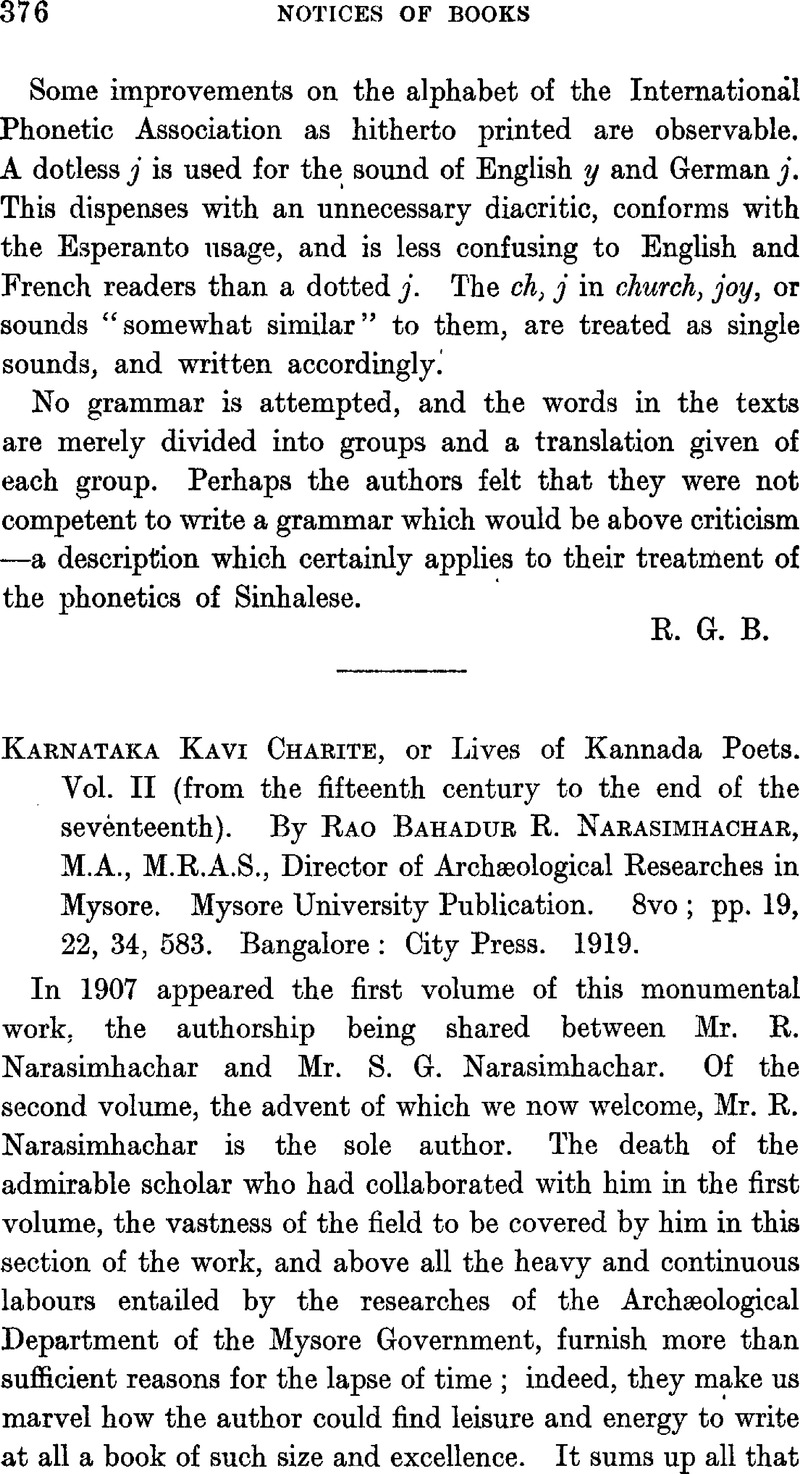No CrossRef data available.
Published online by Cambridge University Press: 15 March 2011

1 Considerable additions, of course, might still be gleaned from unpublished inscriptions. For example, I may note that the Sogal record of Śaka 902, of which the poetical portion is exceptionally good, was composed by Kamaḷāditya, who in it addresses or quotes an otherwise unknown Dēvaṇa Paṇḍita. A Hottur inscription of Śaka 959 was “written”, i.e. drafted, by the sēnabōva or town-clerk Dāsimayya, who was also a poet, and who has appended at the end a moral stanza bearing his name ; whether he composed the rest of the record is not clear. Another Hottur inscription, of Śaka 988, was the work of the poet Rājavallabha, and was corrected and amplified by Chandra Bhaṭṭa and Baḷabhadra Dēva. Perhaps this Chandra Bhaṭṭa is the same as the poet of that name noted in the present work (vol. i, p. 136, and vol. ii, p. 3) ; at least, there is nothing to be said against the identification.